Bonnie and Clyde Blu-ray Movie
HomeBonnie and Clyde Blu-ray Movie 
Warner Bros. | 1967 | 111 min | Rated R | Mar 25, 2008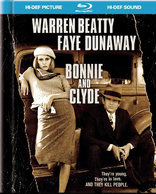
Movie rating
8.1 | / 10 |
Blu-ray rating
| Users | 4.2 | |
| Reviewer | 3.5 | |
| Overall | 3.9 |
Overview
Bonnie and Clyde (1967)
Bored waitress Bonnie Parker falls in love with an ex-con named Clyde Barrow and together they start a violent crime spree through the country, stealing cars and robbing banks.
Starring: Warren Beatty, Faye Dunaway, Michael J. Pollard, Gene Hackman, Estelle ParsonsDirector: Arthur Penn
| Drama | Uncertain |
| Period | Uncertain |
| Romance | Uncertain |
| Biography | Uncertain |
| Crime | Uncertain |
| Heist | Uncertain |
Specifications
Video
Video codec: VC-1
Video resolution: 1080p
Aspect ratio: 1.78:1
Original aspect ratio: 1.85:1
Audio
English: Dolby Digital Mono (192 kbps)
Subtitles
English, English SDH, French, Spanish, Korean
Discs
25GB Blu-ray Disc
Single disc (1 BD)
Playback
Region free
Review
Rating summary
| Movie | 3.5 | |
| Video | 4.0 | |
| Audio | 3.0 | |
| Extras | 4.0 | |
| Overall | 3.5 |
Bonnie and Clyde Blu-ray Movie Review
Warner's digibook release brings the crime duo's exploits into better focus in 1080p.
Reviewed by Greg Maltz January 7, 2009Long before Natural Born Killers and Thelma and Louise--even before Butch Cassidy and the Sundance Kid came to the silver screen--there was Bonnie Parker and Clyde Barrow. During the 1930s, the crime couple on the run became celebrity murderers that percolated national consciousness. Press coverage of their exploits blurred the lines between reporting their violent crimes and immortalizing them as folk heroes. Played by Faye Dunaway and Warren Beatty, the duo graced the screen in the 1967 crime classic that explored taboo subjects like society's fascination with murder and the relationship between violence and sexuality. While Bonnie and Clyde might seem tame by today's standards, it broke new ground at the time of its release and proved hugely influential. One can imagine the film being watched intensely by an impressionable young Oliver Stone, who used it among other influences as inspiration for the gratuitous violence, revisionism and indictment of American popular culture that would form his body of work. But even forgetting that Bonnie and Clyde was a remarkably influential study of violence, sexuality and Americana, it is noteworthy in other respects, helping to establish the careers of Beatty, Dunaway and Gene Hackman. Its screenplay and cinematography are also solid, earning it a place among the most popular films of all times. It is little wonder that Warner Home Video made it a priority to release Bonnie and Clyde in the early days of DVD and now Blu-ray.
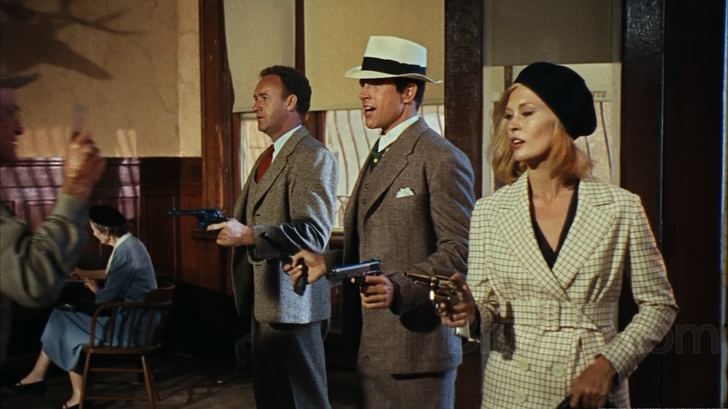
Buck Barrow (Gene Hackman), Clyde Barrow (Warren Beatty) and Bonnie Parker (Faye Dunaway) hold up a bank.
Bonnie and Clyde was written by David Newman and Robert Benton, directed by Arthur Penn and produced by Warren Beatty. It won a 1967 Academy Award in cinematography for Burnett Guffrey, and was nominated for best picture, actor, actress, director, story/script and last but not least costume design. But the critical acclaim and studio support wasn't always there. At first, Warner was resistant to the idea. Once Beatty convinced the studio to fund the film, a great deal of effort went into production. Bonnie and Clyde was filmed in 10 weeks in small northeast Texas towns that evolved little since the 1930s and are to this day known as "Clyde Barrow Country". Three of the banks actually held up by the crime duo are located there and some of the Texans who had been around during those heists were used as extras. Twenty cars from 1930-34 also lent authenticity to the period piece. But none of these details had as much impact as the gorgeous indoor shots and lush outdoor landscapes that earned Bonnie and Clyde the Oscar for best cinematography. Warner has brought new life to the visuals and the legacy of the film with this BD digibook release. It is surely the definitive version, with an impressive booklet, ample bonus documentaries and audio that, while far from perfect, may be as good as it will get.
Bonnie and Clyde Blu-ray Movie, Video Quality 
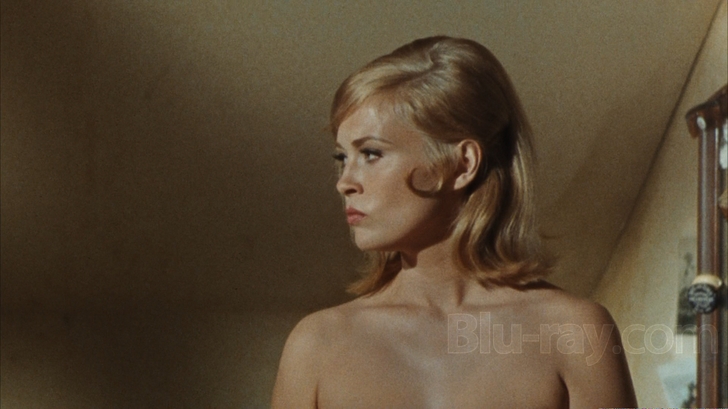
As the film opens with Faye Dunaway posing naked in an upstairs bedroom, it becomes clear how artistically and sensually Bonnie and Clyde was shot. In fact, some critics at the time complained that the seductive elements of the cinematography, comedy and frivolity of the film would make crime more attractive to impressionable youths. Well, if gorgeously shot footage transferred lovingly to 1080p is a crime, Warner's BD needs to be placed in custody. The first thing one notices about this new transfer is the improved definition and color warmth. While it will not win any awards for best picture quality among available Blu-ray titles, it has been cleaned up far better than other films from that era, such as Butch Cassidy and the Sundance Kid. Minimal dirt and grain are visible and decent depth is maintained by virtue of the 1080p resolution, true blacks and color vibrancy.
Warner tends to process and DNR some of its older catalog titles to bring them to Blu-ray, but that isn't always a bad thing if done in moderation. The studio has had to walk a fine line between upsetting early adopters who expect to see noise-free and grain-free picture, and video purists who want to get as close to the source as possible. Erring on the side of the former is not always a bad idea, and in the case of Bonnie and Clyde, ample cues from the original film are still visible, with grain prevalent but by no means distracting. The clean-up is overall well-advised and well-executed, delivering a mostly noise-free viewing experience with lively colors and good contrast. While nowhere near as sharp and detailed as most modern films, the cinematography shows a good balance between elements of the picture and maximized texture detail in both the foreground and background. Watch the scene where Clyde teaches Bonnie to improve her targeting skills using a tire swing. Penn and Guffrey framed and shot this scene perfectly and it shows on Warner's VC-1 encode.
Bonnie and Clyde Blu-ray Movie, Audio Quality 
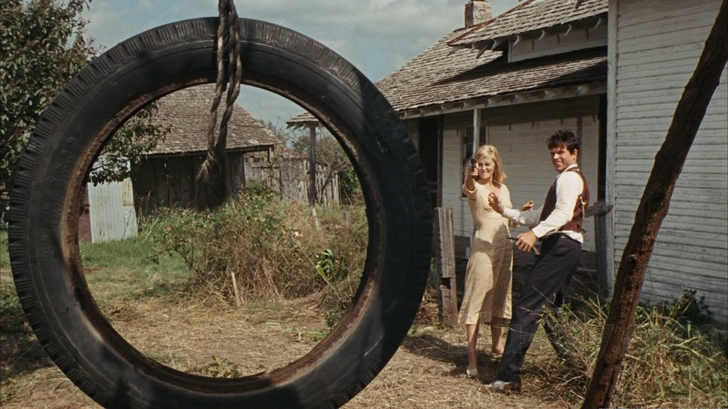
The audio will be a lot more problematic for most HT hobbyists expecting a surround mix of some kind as well as a high definition track to accompany the 1080p video. Alas, Warner included only a monaural Dolby Digital track. Before cries of "boo" and "hiss" ring out across the land, Warner did have a major challenge on its hands in restoring audio elements, as the original recordings that went into Bonnie and Clyde were not in the greatest shape and could not be used to engineer a surround mix. Be that as it may, one would expect the material that is available to be remastered in a way that could celiver more than 192 kbps. Just because a track is mono doesn't mean it has to be lossy, and again I have to question Warner's commitment to audio excellence here. For its part, the dialog sounds crisp and only occasionally muffled, and the music is lush, if slightly rolled off in the treble. Speeding cars emit a somewhat loose, fatiguing bass emission. But the push for a lossless, high definition track should have been a priority, even if monaural and traced to inadequate sources.
Bonnie and Clyde Blu-ray Movie, Special Features and Extras 
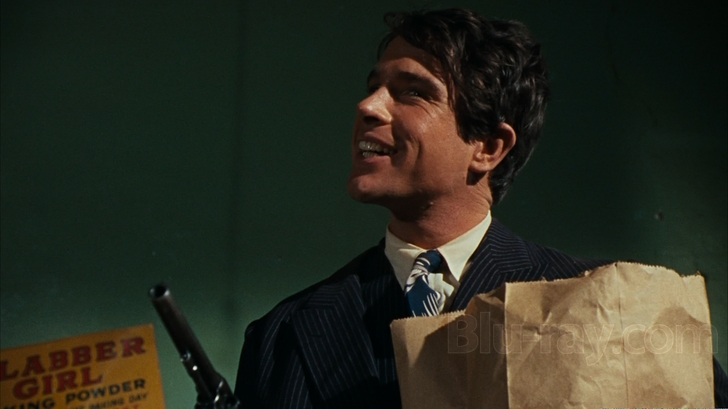
In honor of Bonnie and Clyde's 40th anniversary, Warner made extra effort to include quality content on the digibook Blu-ray and remastered DVD that far exceeds the original DVD. The bonuses do not include audio commentary, but honestly I do not miss it. The new documentaries more than make up for that and are generally more engaging than listening to voices drone on and on over the footage. Unfortunately, the featurettes are not high definition and are simply ported over from the remastered DVD that was released concurrently. An HD DVD version was also released at this time and Warner apparently didn't bother to change that logo to a Blu-ray logo on the back insert card, at least not on my copy.
Of course, the most visible bonus content of the BD release is the cover and glossy photograph booklet characteristic of Warner's digibooks. One can imagine a marketing report for the studio's Home Video division showing that consumers revere their favorite movies like their favorite books and want them to have a special place on the shelf. I do find that these book editions with their photographs, actor bios (there is at least one rather egregious omission from Gene Hackman's film credits, as Scarecrow is not listed) and film notes make for a nice keepsake. The book treatment does seem like a labor of love from the studio and I cannot understand why some fans are so irate at their mere existence as differently sized and textured than standard Blu-ray cases. It is also confusing as to why Warner chooses some titles for digibook and not others. With Bonnie and Clyde, Shawshank Redemption and One Flew Over the Cuckoo's Nest getting the treatment, one would have expected Cool Hand Luke to be digibooked too. But it wasn't.
Love and Death: the True Story of Bonnie and Clyde, at nearly 45 minutes, should be essential viewing for any fan of the film. Why? Because this History Channel production ignores the film and focuses on the real life crime duo's exploits. To me, it went beyond background because it gave me the tools to better understand the motivation for the film. The film is not addressed at all. However, from the experts and writers interviewed for the documentary, one can understand how and why the film diverged from reality. Don't expect to be excited by this featurette, but expect to be informed.
Revolution--the Making of Bonnie and Clyde is a one-hour documentary made specifically for the 40th anniversary of the film that covers the technical details as well as its place in cinema history. It includes interviews with director Arthur Penn, screenwriter Robert Benton, creative consultant Robert Towne and filmmaker Curtis Hanson as well as Faye Dunaway, Gene Hackman, Michael J. Pollard, Estelle Parsons and Warren Beatty. Rather than on-set photos or film excerpts, the documentary delivers a barrage of "talking head" interviews spliced together. Fans of the movie will find a treasure trove of no-frills information--a bit boring at times--but it covers all elements of the film from casting to shooting to marketing and hyping the release.
Rounding out the bonus content are two deleted scenes that don't even have audio, eight minutes of wardrobe tryouts featuring Warren Beatty and standard definition versions of the teaser and full trailer with DD monaural sound.
Bonnie and Clyde Blu-ray Movie, Overall Score and Recommendation 
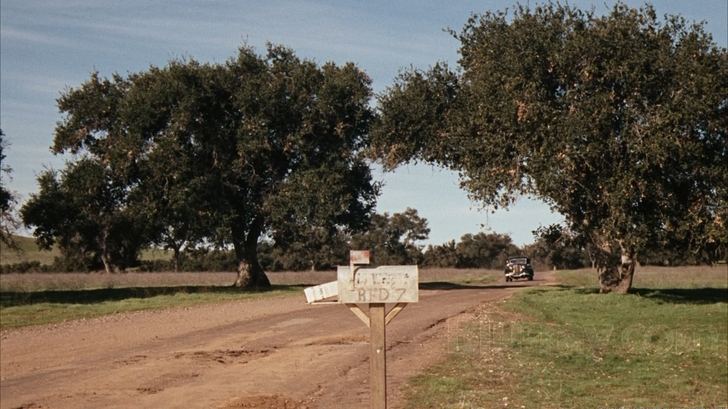
Bonnie and Clyde is a noteworthy film not just because of the writing, acting and cinematography, but because it marks a point in Hollywood when there was a conscious decision to really modernize and "sex up" the approach to violence and history to a greater extent than had been previously seen. Even the studio head, Mr. Warner himself, was opposed to the idea initially, but couldn't stem the progress of certain liberties taken to draw in crowds. Everyone knows what happens at the end of Bonnie and Clyde (if you don't, avoid reading the spoiler ahead), but it seems logical that a pair of armed and dangerous, cop-killing, thieving thugs on the run, no matter how charming, should fully expect to be gunned down with no "due process". Yet the film shows the frivolity, charm and comedy of the couple, not to mention their glamorous looks. It shows them robbing banks full of rich folks' money as if that is somehow justified, being immortalized in the press and generally having the time of their lives. While many films--before and after Bonnie and Clyde--glorified or romanticized criminal behavior, it is possible that none were as influential or sensual or marked as great a turning point in what audiences came to expect from crime films. Some critics back in 1967 recognized this as a major problem with Beatty's movie, but others praised it.
Similar titles
Similar titles you might also like

Ain't Them Bodies Saints
2013

Thieves Like Us 4K
Standard Edition
1974

Live by Night
2016

Boxcar Bertha
1972

The Petrified Forest
1936

The Thomas Crown Affair
Reissue
1968

They Live by Night
1948

The Getaway
1972

Dog Day Afternoon
40th Anniversary Edition
1975

The Pay-Off
Losing Game
1930

Once Upon a Time in America
Extended Director's Cut
1984

The Assassination of Jesse James by the Coward Robert Ford
2007

In Cold Blood
1967

Moonrise Kingdom
2012

Days of Heaven 4K
1978

Little Caesar
1931

The Sting 4K
1973

Catch Me If You Can 4K
Limited Edition
2002

The Irishman
2019

More
1969
